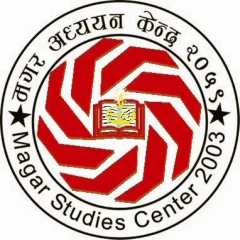Pun, Santa. B. (2062 BS). “Autopsy of An Ode to the Gurkhas”
in Shodhmala, Year 1, No. 1. Published by Magar Studies Center,
Lalitpur, Nepal. pp.17-32.
Annotation by: Dr. Govind Prasad Thapa
The writer has minutely uncovered the details of history relatedto ‘bravest of the brave-Gurkhas’. He narrates some of the historicalevents that took place in connection with the Gorkha Durbar and Magar people in the past. He refers to eminent scholar Mahesh ChandraRegmi’s observation, “At least seven among the 49 Kajis of this period
(1768-1814 AD) were Magars of the Rana and Thapa clans, while oneNarsing was a Gurung.” The writer adds, “This indicates that in thecritical expansion phase of Nepal, prior to the Anglo-Nepal war of 1814-1816, “at least” fifteen percent of the Kajis were Magars.”The writer adds that Ran Bahadur’s assassination in 1806 gave Bhimsen Thapa the opportunity to eliminate all his potential rivals.
The writer again quotes Regmi, “The turbulent period of following Ran Bahadur’s assassination marked the virtual end of Magar-Gurung representation at the Kaji level. Narsing Gurung was beheaded, while
the four Rana-Magar Kajis were removed from their posts. The sixKajis in the 1808 list include only one Magar, Devadatta Thapa.”
The article further covers some of the historical events-such asthe Lahore connection—how Gurkhas employment in British Army began; how “dissatisfied officers like Bal Bhadra along with 200 othervolunteers going to Lahore to join the Punjab leader, Ranjit Singh, rather than serve the Nepalese government they could not reconcile with or theBritish they fought against.” The article covers other historical events those that have had historical impact in the history of Nepal.
